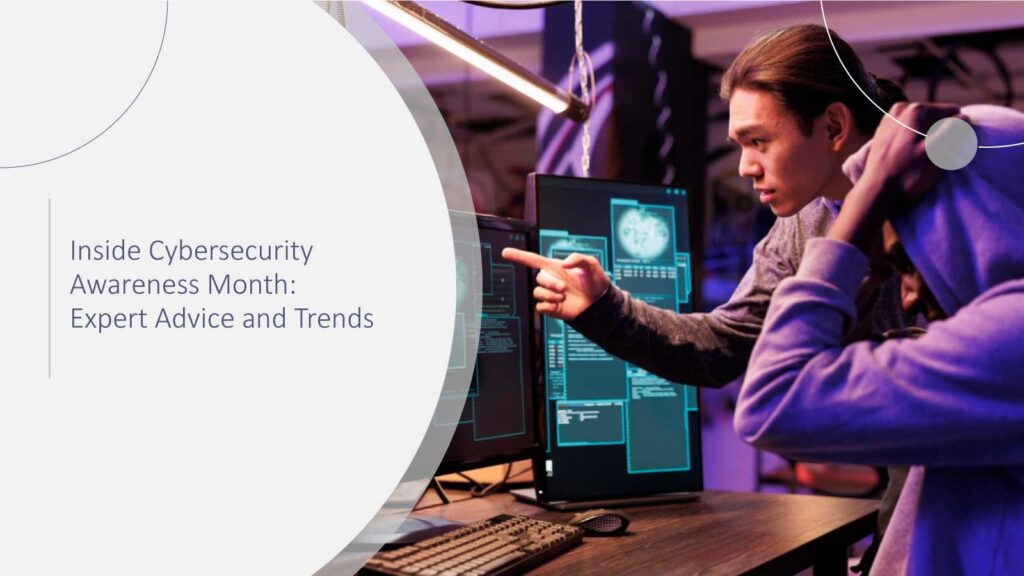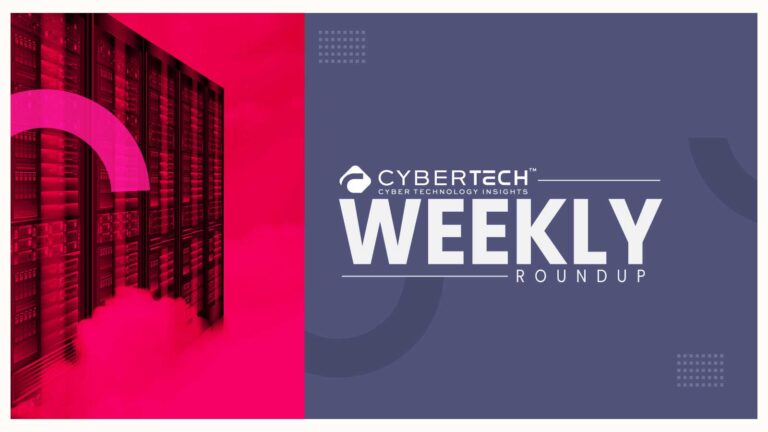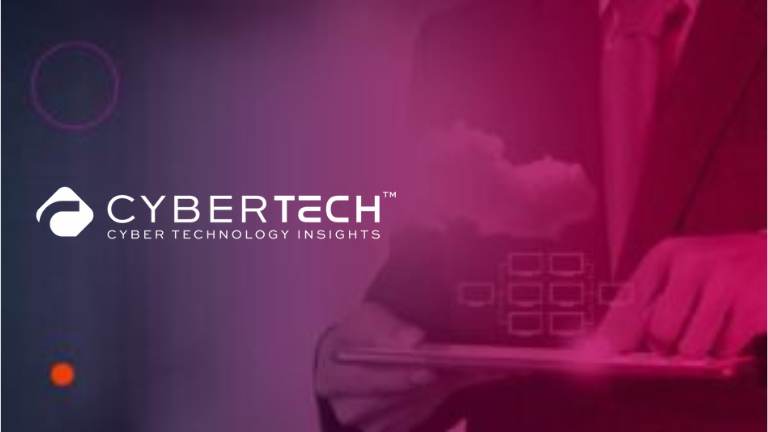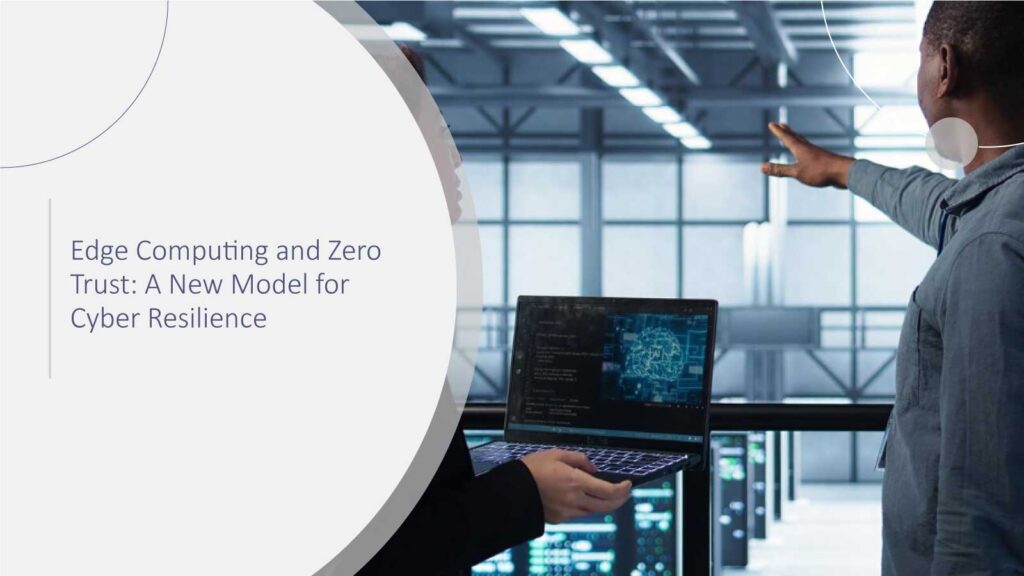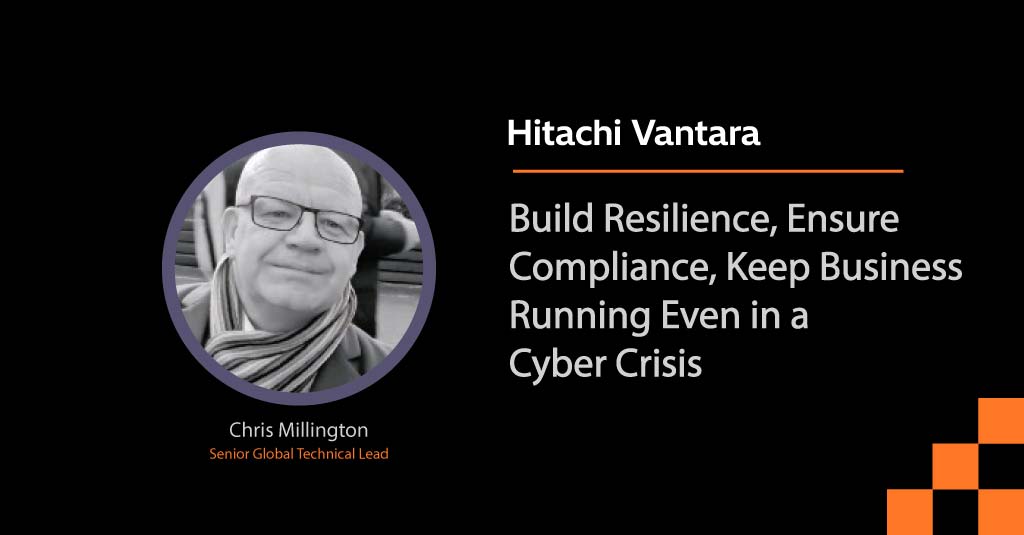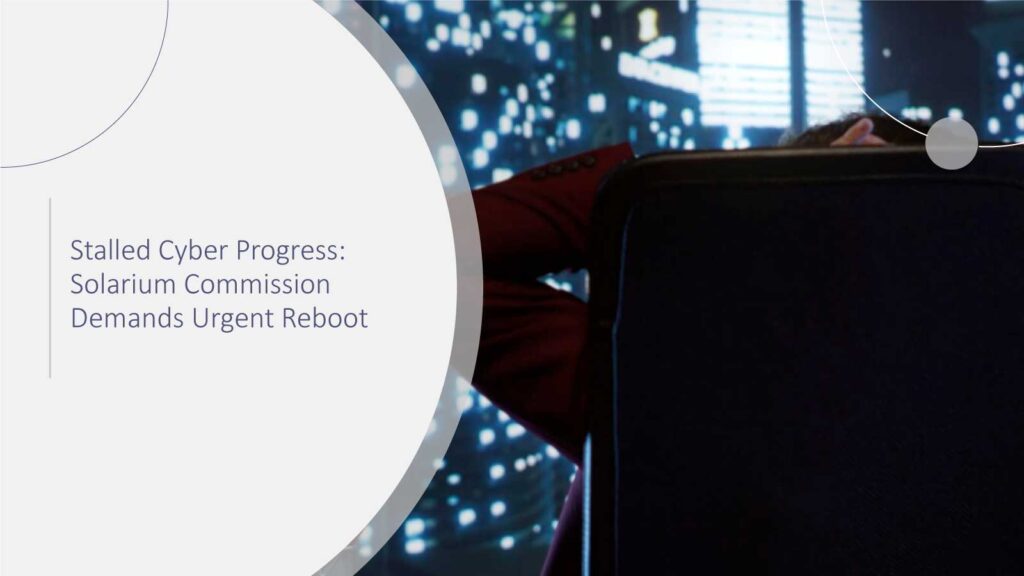October is not only the start of the fall season but also Cybersecurity Awareness Month, a time when the importance of cybersecurity is recognized not only in organizations but also in governments and society at large. As threats are evolving quickly than ever, this month gives a very appropriate reminder that saving our digital and physical worlds still calls for being on the offensive, having a well-thought-out strategy, and employing different methods.
Security is no longer solely an issue for the IT department; it has become a must-have in the business world. The trouble with the organizations is that they are handling the situations of AI attacks and the problem of encryption by quantum technology. They need to be very tough and prepared for any change that may happen. We contacted cybersecurity experts to get a better understanding of the current trends, the best practices, and the advice of the experts. Their bright insights are leading the way forward.
The Emerging Threat Landscape: From Certificates to AI

Jason Soroko, a Senior Fellow at Sectigo, stresses the importance of taking anticipatory measures in the cryptocurrency area:
Cybersecurity Awareness Month serves as a critical reminder that basic cyber hygiene must now evolve into a strategic defense. Our recent State of Crypto Agility Report reveals enterprises are dangerously unprepared for two converging threats: the mandate for shorter certificate lifespans beginning in less than six months and the looming shift to Post-Quantum Cryptography (PQC) by 2030.
- First, while a striking 96% of organizations are concerned about short-lived certificates, only 19% feel prepared for the resulting monthly renewal cadence. This concern is exacerbated by a critical automation deficit, as only 5% of companies have fully automated their certificate lifecycle management. Reliance on manual processes leaves the vast majority exposed to outages caused by mismanaged certificates as renewal frequencies rapidly accelerate.
- Second, the PQC transition requires all current encryption for data in transit to be replaced by 2030, yet only 14% of organizations have fully assessed their vulnerable systems.
- Finally, the effort to master frequent certificate rotation is the single most effective way to build the foundational crypto agility necessary for PQC readiness. Organizations must treat certificate agility as the new security imperative to secure their future in the quantum era.
Beyond infrastructure certificates, email security represents another critical vulnerability that demands attention. With phishing and Business Email Compromise attacks continuing to surge, S/MIME certificates, Verified Mark Certificates (VMC), and Common Mark Certificates (CMC) provide essential email authentication and brand protection. Yet these certificates face the same automation challenges as their infrastructure counterparts. Organizations must extend their certificate lifecycle management strategies to include email security certificates, ensuring both employee communications and brand indicators remain continuously validated and trusted.
The principles of crypto agility apply equally to email security: automated lifecycle management isn’t optional, it’s fundamental to maintaining uninterrupted protection as certificate lifespans compress and quantum threats emerge.

CEO of Black Duck, Jason Schmit, writes:
As we observe Cybersecurity Awareness Month, it’s clear that every month should be treated as a reminder that the cybersecurity landscape has irrevocably shifted. The old software world is giving way to a new reality defined by AI-driven complexities.
The average application has three times more code than it did 4 years ago, and this trend will continue in the years to come. By 2030, there will be three times more applications than there are today.
As global cyberattacks continue to proliferate, with a 30% increase last year alone, there were an average of over 1,600 attacks per organization each week. Add to that AI-generated code, which is projected to grow by 400% by 2030, and the risks are only going to accelerate and compound.
This new reality renders traditional security tradeoffs ineffective. However, by adopting true scale application security, security and business leaders can access the resources needed to make informed decisions and drive business innovation with confidence. This approach empowers organizations to navigate the evolving cybersecurity landscape effectively.

Dipto Chakravarty, Chief Product & Technology Officer at Black Duck, agrees with this perspective:
As we observe National Cybersecurity Awareness Month this October, we must acknowledge that the old software world is gone, giving way to a new set of truths defined by AI. The recent “State of Embedded Software Quality and Safety 2025” report from Black Duck revealed that while AI adoption is universal, governance is lagging. Of the 785 development and security professionals surveyed, 89.3% reported that they’re already using AI-powered coding assistants within their organizations, and 96.1% are integrating open source AI models into their products. However, this rapid adoption has outpaced the development of necessary governance and security measures, with 21.1% of companies lacking confidence in their ability to prevent AI from introducing security vulnerabilities. This data underscores the imperative for proactive cybersecurity measures and comprehensive risk management strategies to protect our digital assets. Let’s leverage this awareness month to reinforce our commitment to securing our digital world, delivering AI development velocity with uncompromised trust.
Physical Security in a Cyber-Connected World

Shikhar Shrestha, CEO & Co-Founder, Ambient.ai, says the U.S. Department of Homeland Security created Cybersecurity Awareness Month more than twenty years ago to spotlight the mission-critical role cybersecurity plays in national security.
While cybersecurity is national security, so is physical security. Yet in many cases, modernizing physical security systems has long been overlooked–leaving security teams to grapple with fragmented tools, intrinsically reactive processes, and antiquated technology. Today, physical security teams are expected to monitor hundreds of video feeds, validate thousands of access control signals, and investigate every alert in real-time, making their mission to protect complex environments nearly impossible.
This Cybersecurity Awareness Month, let’s look beyond using technology to secure the virtual world and consider how innovative applications of technology can transform physical security by equipping security teams with the proper tools to protect people, places, and critical infrastructure.
In practice, this means deploying intelligent systems that can process more data than a human, interpret context in real-time, and automate decisions across video, access control, and incident response workflows. By embracing a new operational model, one where AI-powered systems act as intelligent agents, augmenting human operators, security leaders achieve better outcomes, from protecting corporate offices and data centers to schools and manufacturing facilities. This is the promise and the power of Agentic Physical Security.
Government and Enterprise Strategies for Cyber Resilience

Miguel Sian, Senior VP of Technology at Merlin, says:
The U.S. government is a prime target of cybercriminals and nation-state actors. Shoring up cyber defenses is critically important to prevent incidents and mitigate the impact of cyberattacks. At the same time, many budgets remain flat, leaving Federal IT and security leaders with a nearly impossible task: modernize technology environments to improve cybersecurity and future-proof their agencies without new funds.
The U.S. Department of Homeland Security declared October “Cybersecurity Awareness Month” in 2004, a time to recognize cybersecurity’s critical role in national security and prioritize ways to secure our world. As we look at the current landscape, how should Federal IT and security leaders approach this high-stakes, challenging situation, where they’re faced with stagnant or shrinking budgets, skyrocketing costs to manage legacy technology and support services, and increasing demands to advance cyber capabilities?
Today, forward-leaning agencies are taking an innovative cost-neutral approach to immediately fund their modernization initiatives. This approach, self-funded modernization, enables agencies to reclaim funding from costly enterprise IT support contracts and reinvest those dollars into modern, compliant infrastructure.
Self-funded modernization can yield positive results for agencies that have found themselves locked into legacy support agreements or dependent on appropriations to fund new projects involving technology. Self-funding can also help to accelerate modernization efforts like zero trust, quickly align with Executive Orders, strengthen cybersecurity, and facilitate regulatory compliance.
As we reflect on the past 20 years of Cybersecurity Awareness Month and prepare for the future, it’s crucial to prioritize initiatives that keep the U.S. secure, competitive, innovative, and ready for the digital future. Initiatives like self-funded modernization provide a practical, budget-conscious path forward for agencies to modernize IT infrastructure. It provides a clear way to free up funds and resources to build a cyber-strong and resilient America.
Aligning Security with Business Goals

Kunal Modasiya, Senior VP at Qualys, mentions that:
Recent research reveals a troubling gap: while nearly half of organizations have formal cyber risk programs, only 30% align those efforts with business objectives. This disconnect leaves companies vulnerable, not just to technical breaches but to cascading impacts across operations, finances, and reputation. To close this maturity gap, security leaders must move beyond legacy metrics like CVSS scores and adopt a unified risk framework such as a Risk Operations Center (ROC) – one that continuously correlates vulnerability data, asset context, and threat exposure. This will enable smarter prioritization and faster, more meaningful remediation.
Cybersecurity Awareness Month is a timely reminder: resilience is not just about tools and frameworks. It’s about context, clarity, and collaboration. Business leaders must ensure their 2026 cybersecurity strategy reflects this shift, investing in workforce enablement, governance, and technologies that align security with what truly matters to the business.
Mobile Security: The Overlooked Frontier

Kern Smith, VP of Global Solutions at Zimperium, points to the mobile threat landscape:
Cybersecurity Awareness Month has become increasingly important as cybercriminals adopt a mobile-first attack strategy. Smishing now represents nearly 70% of all mobile phishing attacks, showing how attackers are exploiting everyday communication channels. At the same time, over half of mobile devices run outdated operating systems, leaving them exposed to vulnerabilities that can be easily exploited. Too often, organizations focus their awareness efforts on traditional phishing via email, while mobile threats, text messages, malicious apps, and risky Wi-Fi are overlooked.
Businesses must adapt awareness programs to reflect where employees actually work and connect today: their mobile devices. Enforcing on-device protection across both managed and unmanaged devices, coupled with education around mobile-specific risks, is one of the most effective ways to reduce exposure. Looking ahead, organizations that prioritize mobile security in their awareness initiatives today will be better prepared for the AI-driven phishing and zero-day exploits of tomorrow.
Employee Awareness and Organizational Culture

Diana Kelley, CISO at Noma Security, mentions:
Cybersecurity Awareness Month gets more important every year. As all of our business and personal data moves online, the digital threat surface rapidly expands through cloud, hybrid work, and now AI. Traditional awareness campaigns have taught employees to spot basic phishing, but today’s attackers are using generative and agentic AI to launch far more convincing scams, everything from highly customized and automated spear phishing to deepfake executive voices to automated invoice fraud. The biggest gap I see is that many awareness efforts are still anchored in yesterday’s risks, leaving staff unprepared for the speed and scale of AI-driven threats. Looking ahead two to three years, businesses must adapt by running scenario-based “AI risk drills,” just as they would fire drills, so all employees can recognize AI-powered risks.
Just as important, incident response must evolve for the AI era, where threats spread faster and often hide inside autonomous agent workflows and connections. Without strong observability and audit platforms purpose-built for AI, investigations can quickly stall because it becomes difficult to trace vulnerable connection points, how an agent reached a decision, or which data was accessed because an action was executed. Building that visibility into AI systems today will be the difference between a quick containment and a costly, prolonged breach tomorrow. Cybersecurity Awareness Month is a great time to reassess security training and governance. The threat landscape is shifting in real time, and organizations need to raise awareness not just about phishing emails or weak passwords, but also about how to detect, contain, and learn from incidents involving AI systems to ensure all areas of their business are covered.

Agindipta Sarkar, Chief Evangelist at ColorTokens, supports the idea of cultural integration of cybersecurity awareness:
Studies show that cybersecurity awareness initiatives that focus solely on educating individuals are one of the most misleading indicators of cyber resilience, as they give a false sense of accomplishment without being truly effective. Being breach-ready requires everyone to understand how they can contribute to preventing breaches from escalating into crises. Cybersecurity Awareness Month should be a culmination of a year’s effort, where cybersecurity awareness initiatives and participating teams would be rewarded for their effectiveness in evangelizing cybersecurity to meet the organization’s intent to be breach-ready. Regular cybersecurity awareness needs to extend beyond phishing simulations to empower every team member by engaging in role-playing exercises that simulate real-world cyberattacks, enabling them to understand potential threats and respond effectively. The CISO’s office also has a role in turning every internal breach into an opportunity for awareness without naming and shaming. And the true value is embedding awareness in the culture of the organization, and not a flash in the pan, one day a year.

Craig Jones, CSO at Ontinue, outlines five essential best practices for organizations:
Cyber threats are evolving faster than ever. From MFA-bypassing identity attacks to the resurgence of USB malware, the findings in Ontinue’s 1H 2025 Threat Intelligence report show that attackers are exploiting both advanced techniques and overlooked basics.
Defending against this landscape requires more than tools. It demands a balance of fundamentals, intelligence, and agility, and it requires raising cybersecurity awareness across the entire organization. Every employee plays a role in reducing risk, whether by recognizing phishing attempts, following access policies, or avoiding unsafe practices like plugging in personal USB devices.
Strong cybersecurity is no longer just an IT issue; it is a business differentiator. Customers, regulators, and partners all expect organizations to demonstrate resilience and transparency. A company-wide culture of security helps build trust while protecting operations.
Here are five best practices every organization should prioritize:
- Fortify Identity Controls: MFA alone is no longer enough. Implement phishing-resistant MFA, revoke stale tokens, and continuously monitor for anomalous login behavior.
- Audit Cloud Persistence: Adversaries are layering persistence in Azure and tampering with diagnostics to extend dwell time. Continuous auditing of app registrations, automation jobs, and privileged roles is essential.
- Reinforce the Basics: A 27% rise in USB malware shows that, unfortunately, old attack methods still work. Restrict removable media, reduce local admin privileges, and strengthen configuration hygiene.
- Manage Third-Party Risk: Nearly 30% of breaches stemmed from vendor compromise. Enforce strict partner standards and continuously monitor external access to your environment.
- Find the Right Managed Security Partner: Automation accelerates detection and response, but it cannot replace human judgment. The right managed security partner combines AI-driven capabilities with expert analysts, helping organizations close the gap between the speed of attack and the speed of defense. This ensures security can scale as the business grows.
Cybersecurity is not a static project. It is a continuous process that requires adapting defenses as quickly as adversaries evolve their attacks. By focusing on these five priorities, organizations can build resilience against today’s most pressing risks.

Devin Ertel, Chief Information Security Officer at Menlo Security, quotes that
The browser is the most critical and vulnerable application in today’s enterprise. Menlo Security’s latest report highlights that web traffic to generative AI sites surged 50% year-over-year to 10.53 billion visits in January 2025, with 80% of that activity happening directly in browsers. This makes the browser not just the primary gateway to AI tools, but also the main channel through which sensitive data and potential threats now flow. At the same time, 68% of employees are using free AI tools with personal accounts, and more than half are pasting sensitive corporate data into them, creating major risks of data leakage.
AI is amplifying both opportunity and risk. While employees rely on it to be more productive, attackers are using the same technology to spin up convincing phishing sites, fake domains, and ransomware delivery mechanisms at scale. With more than 6,500 GenAI domains and 3,000 apps already active, the browser has become the frontline battleground for security teams.
That’s why this year’s Cybersecurity Awareness Month theme, “Stay Safe Online”, resonates so strongly. Security leaders can’t stop AI adoption, but they can govern it responsibly, deploying secure browsers, enforcing zero-trust access, and eliminating shadow AI with sanctioned, safe tools. Modernizing browser security isn’t just about compliance, but about protecting the workforce where they live and work today, which is online.
Recommended: The Ultimate Guide: 25 Best Cybersecurity Software for 2025

Derek Manky, Chief Security Strategist and Global Vice President, Threat Intelligence, Fortinet, says that:
In a year where threats have grown more automated, opportunistic, and relentless, two fundamentals remain critical: protecting against phishing and keeping software updated. These aren’t new ideas, and Fortinet’s 2025 Global Threat Landscape Report reveals why these basic actions continue to be the foundation of resilience. The report highlights a record surge in automated cyberattacks over the previous year. Attackers are increasingly using bots and machine-speed tools to scan for vulnerabilities and launch phishing campaigns at scale. This shift has made phishing more dangerous than ever.
The value of Cybersecurity Awareness Month is that it reminds us to take the time to turn research into action. Here are two practices reinforced by Fortinet’s findings that we recommend everyone implement:
- Strengthen phishing awareness. Employees should be trained to pause before clicking, verify sender details, and report suspicious messages. And remember, multifactor authentication (MFA) provides an additional safety net when credentials are compromised.
- Automate software updates where possible. Organizations should implement centralized patch management. For individuals, enabling automatic updates on personal devices helps eliminate the lag time between patch releases and applications.

Edwin Covert, Vice President of Advisory Services at Fenix24, says that:
Cybersecurity Awareness Month has grown in importance each year since its inception by the federal government in 2004. This growth is a direct result of the increasing importance cybersecurity plays in today’s information systems and technologies. Without an understanding of risk management for these systems and technologies, and the related cybersecurity management, operational, and technical controls to mitigate or transfer those business risks, organizations are unlikely to meet their overall objectives or missions. Determining realistic threat frequencies and internal susceptibilities to threat actor activity, along with both primary and secondary loss magnitudes, creates both a meaningful picture of risk and mitigation strategies, allowing organizations to stay safer online.

Brian Frank, Director of Technical Services at Fenix24, quotes that
Cybersecurity Awareness Month has taken on greater urgency in recent years as the threat landscape continues to evolve rapidly. Attacks are growing more targeted and disruptive. The victims are bearing significant financial and reputational damage. The attack surface is now expanding with the convergence of remote work, cloud adoption, and digital transformation. Now, even small misconfigurations or untrained users are potential attack points for ransomware.
Organizations are responding with a mix of strategic and tactical measures. Many are embracing zero trust frameworks, investing in threat intelligence platforms, and conducting regular tabletop exercises to test incident response readiness. Cyber hygiene — such as multi-factor authentication, patch management, and employee training — remains foundational.
Equally important is ensuring recoverability through immutable backups, segmented networks, and business continuity planning.

Matthieu Chan Tsin, SVP and General Manager of CRS at Cowbell, states that:
Modern cyber attacks are on the verge of turning 50 years old, and they have been evolving with increasing speed. Today, AI is inserting itself into our professional and personal lives, which poses new risks that we would like to highlight during this cybersecurity awareness month. Phishing is much harder to spot, and cyber attacks can be deployed with greater range and speed.
Companies have to include cybersecurity as a daily consideration. Security solutions such as MFA, regular data backups, the principle of least privilege, and a robust standalone cyber insurance policy are just a few of the must-haves for businesses in 2025.

Kevin E. Greene, Chief Cybersecurity Technologist, Public Sector, BeyondTrust, quoted that,
Two national security challenges demand urgent attention this Cybersecurity Awareness Month: software security and identity security. As the backbone of our digital ecosystem, software is both our first line of defense and the first target for attackers looking to exploit weaknesses. We’re at a crossroads: attacks are evolving faster than traditional defenses.
To stay ahead of threat actors, resilience must be coded into every layer. It’s time to move beyond “secure by design” to “resilient by design” by building systems that assume breaches will happen, minimize damage, and recover fast. Security teams must test and validate software under simulated attacks, codify resilience requirements, and tackle the cultural roots of technical debt that make software weak and exploitable.
Meanwhile, identity has become the new battleground. Compromised credentials are the skeleton key for nation-state espionage, ransomware, and consumer fraud. From SolarWinds to Scattered Spider, attackers have shown how one weak identity control can ripple across entire sectors. The rise of non-human and AI identities only widens the attack surface, giving adversaries new footholds in critical infrastructure. The message is clear: without resilient software and robust identity protections, we’re leaving the door wide open for the next cyber crisis.
Conclusion
Cybersecurity Awareness Month is no longer just one of those many items on the schedule, but it demands that organizations overhaul their risk, governance, and resilience approaches. Understanding consumer needs should be mirrored in the tangible and strategic outcomes that experts, being leaders, bring about. Some of the pervasive changes would be illustrated in crypto agility, AI governance, mobile security, and physical protection.
Hello there, what do you think about this text? 52% of employees worldwide confessed to having cyber hygiene that is at least close to the one they should have in practice, Only 26% of company executives said they are totally confident in the cybersecurity measures they have in place, and the pessimistic forecast for 2025 made by IDC experts is that the security operations approach will still be a tough and complex task to handle. They say that almost all security issues in 2025 are similar to those involving culture, intelligence, and agility, besides tools. Organizations that implement comprehensive, foresighted measures today will be the ones that will be able to face tomorrow’s complicated threat landscape in the best way. The opinions of leaders coincide in saying that resilience is being part of the culture and not just ticking a box.
FAQs
1. What is Cybersecurity Awareness Month, and why is it important?
The U.S. Department of Homeland Security initiated Cybersecurity Awareness Month in 2004. This is an annual event that makes the public aware of the different cyber threats and the security steps that are to be taken by organizations as well as individuals to lower the risks involved.
2. How does AI impact modern cybersecurity threats?
One side of the coin is that AI brings almost limitless opportunities to the table. Yet, it can also be twice as risky since attackers can leverage it just as defenders do. For example, working AI may produce phishing sites, ransomware, and deepfake technologies. In contrast, AI tech is embraced by the security industry for real-time monitoring, detection, and automation of activities. Nevertheless, strong governance is very much welcome.
3. What is crypto agility, and why does it matter?
Crypto agility can be best described as the property that allows one cryptographic system to be quickly and easily replaced by another, more secure one, so that the data transfer continues seamlessly without any interruption. It is a move in the direction of post-quantum cryptography (PQC) preparedness and the continuity of secure communication over the internet.
4. Why should mobile security be prioritized in 2025?
Mobile devices have become so essential in modern work and communication that any threats, such as smishing and OS vulnerabilities from out-of-date versions, pose a high risk. Security awareness and device protection programs must be run on mobile devices as well.
5. What role does organizational culture play in cybersecurity?
The IT department alone cannot be the only entity that is creating awareness and taking preparedness measures. Organizations may integrate security into the culture; this can be accomplished by recognizing employees who exhibit proactive conduct and providing scenario-based drills that ensure all employees are dedicated to the risk reduction process.
For deeper insights on agentic AI governance, identity controls, and real‑world breach data, visit Cyber Tech Insights.
To participate in upcoming interviews, please reach out to our CyberTech Media Room at sudipto@intentamplify.com.

